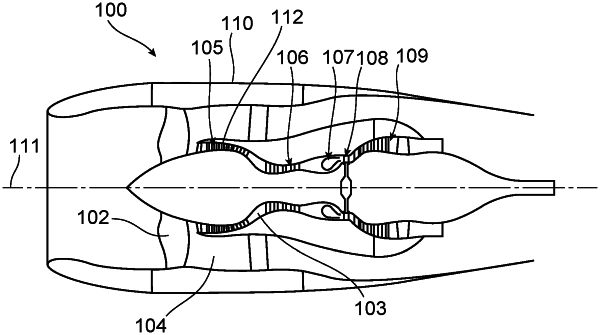| CPC B29C 43/34 (2013.01) [B29C 43/02 (2013.01); B29C 43/52 (2013.01); B29C 70/44 (2013.01); B29C 70/548 (2013.01); B29C 2043/3233 (2013.01); B29C 2043/3238 (2013.01); B29C 2043/3444 (2013.01); B29C 2043/3613 (2013.01); B29L 2031/7504 (2013.01)] | 4 Claims |

|
1. A curing mold for manufacturing a turbomachine component from a composite material, starting from a preform made by laying up prepregs comprising reinforcing fibers impregnated with a thermosetting resin, the curing mold comprising:
a first body and a second body configured to be fitted together, the first and second bodies each comprising an internal surface, each said internal surface comprising a peripheral area at which the first and second bodies are in contact with each other and a central area defining a fixed air gap between the first and second bodies, a shape of the air gap being complementary to the turbomachine component to be manufactured and intended to accommodate the preform;
a heating member configured to heat the preform in the air gap to a first temperature, so as to reduce the viscosity of the resin;
a primary channel formed in the first and/or second body;
an injection member configured to inject fluid under pressure into the primary channel; and
a secondary channel formed in the first and/or second body, the secondary channel having a piston installed free to slide inside said secondary channel along a sliding axis and delimiting, on the one hand, a first chamber in communication with the primary channel, and on the other hand, a second chamber in communication with the air gap, the piston being also configured to compress resin that entered the second chamber of said secondary channel from the preform into the air gap, so as to put the preform under hydrostatic pressure when the preform is located in the air gap, when the heating member heats the preform to the first temperature and when the injection member injects fluid under pressure into the primary channel to the first chamber of said secondary channel.
|